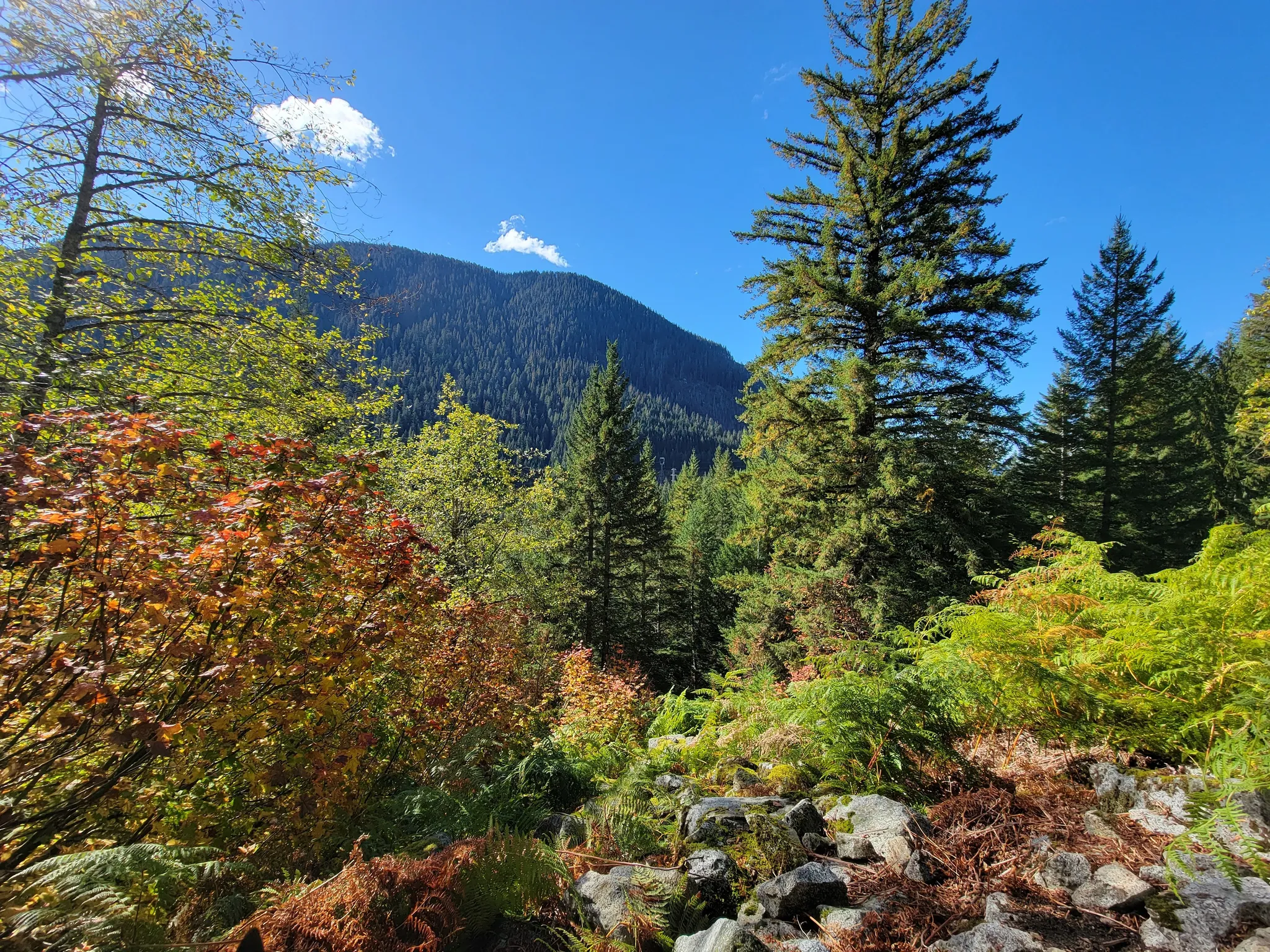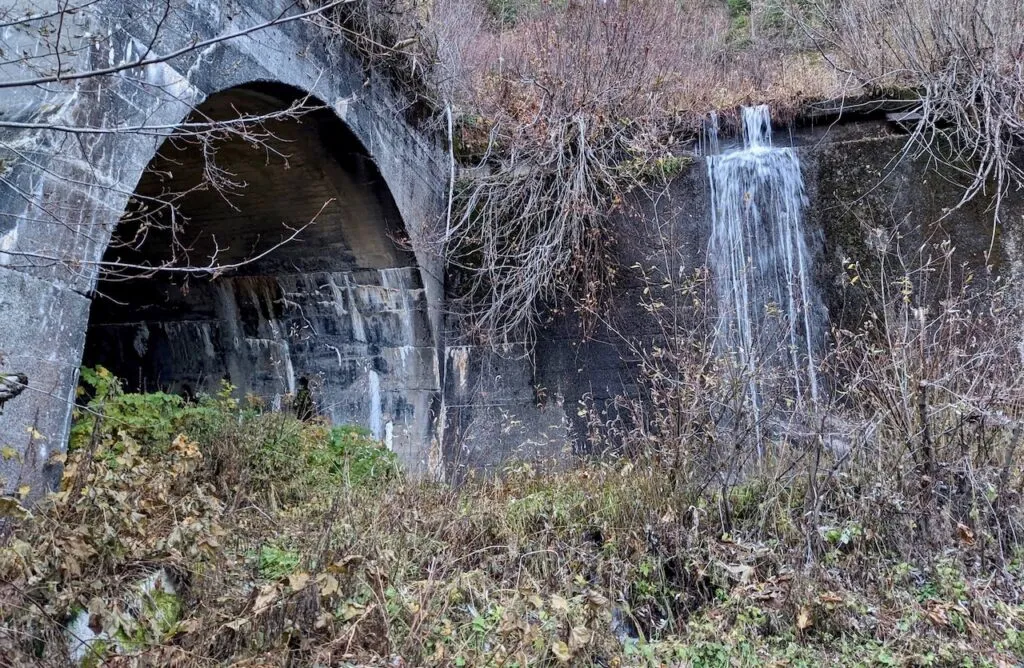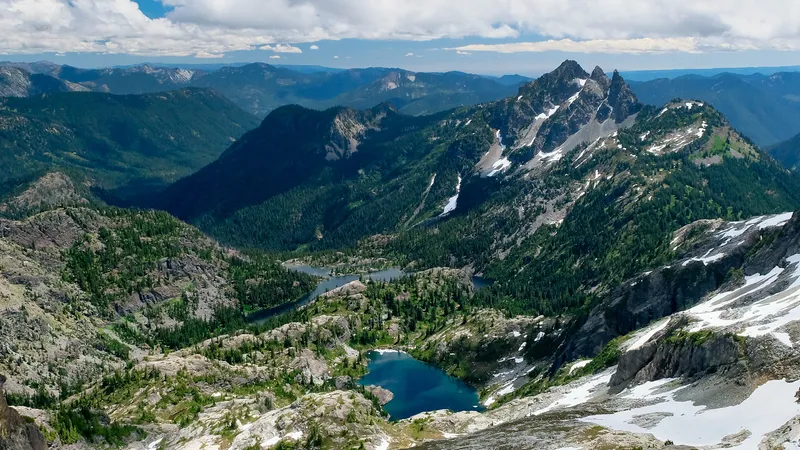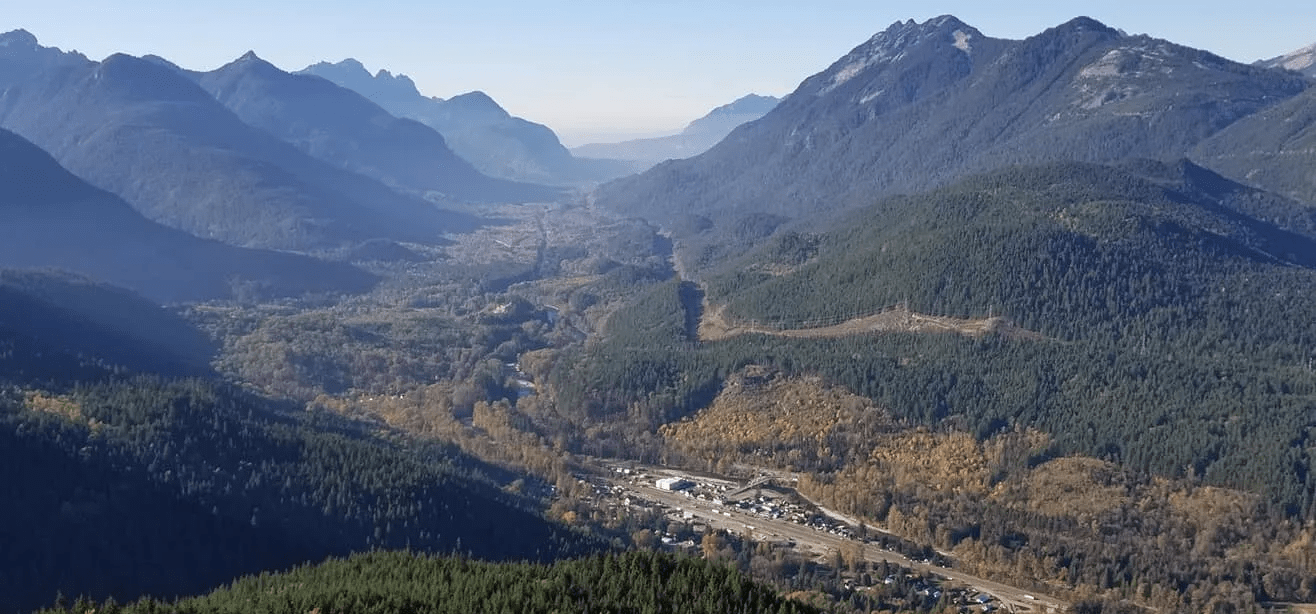The Cascade Range stretches majestically through the Pacific Northwest of North America, creating one of the most impressive volcanic chains on our planet. From British Columbia down through Washington, Oregon, and into Northern California, this mountain range features towering peaks that have shaped the landscape for thousands of years. The Cascade Range contains nearly 20 major volcanoes, along with an incredible 4,000 separate volcanic vents including stratovolcanoes, shield volcanoes, lava domes, and cinder cones.
These volcanoes aren’t just sleeping giants – eleven of the thirteen main Cascade volcanoes have erupted at least once in the past 4,000 years, with seven having erupted in recorded history. They form part of the famous Pacific Ring of Fire, the circle of volcanic activity surrounding the Pacific Ocean. The volcanoes exist because of the Cascadia subduction zone, where the Juan de Fuca tectonic plate slides beneath the North American plate.
Find available hotels and vacation homes instantly. No fees, best rates guaranteed!
Check Availability Now
Visitors to the Cascade Range can experience these geological wonders up close on numerous hiking trails. The volcanic landscape offers stunning views and unique terrain unlike anywhere else in North America. For those exploring Washington state, the historic Iron Goat Trail provides a perfect vantage point to appreciate the volcanic backdrop while walking along a former Great Northern Railway route that once connected travelers to these magnificent mountains.
Major Volcanoes in the Cascade Range
The Cascade Range contains nearly 20 major volcanoes among over 4,000 separate volcanic vents. These impressive peaks form a dramatic backbone along the Pacific Northwest, with some of the most notable volcanoes presenting both stunning beauty and potential hazards.
Mount Rainier
Mount Rainier stands as the highest peak in the Cascade Range at 14,411 feet above sea level. Located in Washington state, this massive stratovolcano is considered one of the most dangerous volcanoes in the United States due to its size and proximity to populated areas.
The mountain is heavily glaciated with 26 major glaciers, making it the most extensively glaciated peak in the contiguous United States. These glaciers create a significant hazard in the form of potential lahars (volcanic mudflows) that could threaten nearby communities.
Mount Rainier was designated as a National Park in 1899, making it one of the oldest national parks in the country. The mountain’s impressive prominence and beauty make it a beloved symbol of Washington state, even appearing on the state’s license plates.
Despite being classified as an active volcano, Rainier’s last major eruption occurred about 1,000 years ago. Scientists closely monitor the mountain for signs of renewed activity.
Mount St. Helens
Mount St. Helens gained worldwide attention during its catastrophic 1980 eruption, which killed 57 people and caused widespread destruction. Located in southwestern Washington, this volcano experienced the deadliest and most economically destructive volcanic event in U.S. history.
The eruption dramatically changed the mountain’s appearance, reducing its height by about 1,300 feet and leaving a horseshoe-shaped crater. Prior to the eruption, Mount St. Helens was known as the “Fuji of America” for its symmetrical cone shape.
After the 1980 event, the volcano experienced periodic dome-building eruptions until 1986. Activity resumed again from 2004 to 2008, creating a new lava dome inside the crater.
Today, Mount St. Helens is an important laboratory for studying volcanic processes and ecological recovery. The surrounding area was protected as the Mount St. Helens National Volcanic Monument in 1982.
Mount Hood
Mount Hood is Oregon’s highest peak at 11,249 feet and is located just 75 miles east of Portland. This stratovolcano features 12 named glaciers and snowfields, making it a popular destination for winter sports enthusiasts.
The mountain has experienced several eruptions during the past 1,500 years, with the last major period of activity occurring in the 1790s, not long before Lewis and Clark’s expedition to the Pacific Northwest. Minor eruptive activity was reported in the mid-1800s.
Mount Hood’s proximity to Portland makes it a beloved landmark and recreation area. The historic Timberline Lodge, built during the Great Depression, sits at 6,000 feet on the mountain’s south slope and operates as a popular ski resort.
Scientists classify Mount Hood as potentially active, with a moderate probability of eruption in the next 30 years. The U.S. Geological Survey maintains monitoring equipment on the mountain to detect early warning signs.
Mount Shasta
Mount Shasta dominates the landscape of northern California, rising to an impressive 14,179 feet. This massive stratovolcano has a volume of about 85 cubic miles, making it one of the largest volcanoes in the Cascade Range.
The mountain actually consists of four overlapping volcanic cones, with the main summit and Shastina (a large satellite cone) being the most prominent features. Native American tribes have long considered Mount Shasta to be sacred, with many legends associated with the mountain.
Mount Shasta’s last known eruption occurred around 1786, observed by explorers at sea. Geological studies indicate that the volcano erupts every 600-800 years on average. The mountain features seven named glaciers, including the Whitney Glacier, the largest in California.
Outdoor enthusiasts flock to Mount Shasta for climbing, skiing, and hiking. The mountain’s size creates its own weather patterns, often trapping moisture and creating heavy snowfall even when surrounding areas are dry.
Lassen Peak
Lassen Peak is the southernmost active volcano in the Cascade Range, located in Lassen Volcanic National Park. Standing at 10,457 feet, it’s the largest plug dome volcano in the world, formed when thick lava cooled and hardened in the volcano’s vent.
Between 1914 and 1917, Lassen Peak experienced a series of eruptions that culminated in a major explosion in 1915. This eruptive period created a new crater and devastated nearby areas with mudflows, ash falls, and pyroclastic flows.
The area around Lassen features impressive hydrothermal areas with boiling mud pots, fumaroles, and hot springs, demonstrating the active nature of this volcanic system. The diverse volcanic features led to the area’s designation as a national park in 1916.
Today, Lassen remains thermally active, with numerous hot springs throughout the park. While currently quiet, scientists consider it likely to erupt again within the next few hundred years, making it part of the ongoing volcanic story of the Cascades.
Geology and Ecosystem of the Cascades
The Cascade Range features a complex geological history and diverse ecosystem that has been shaped by volcanic activity over millions of years. The region’s unique combination of volcanic formations, climate patterns, and biodiversity creates a fascinating natural environment.
Cascade Volcanic Arc Formation
The Cascade Volcanic Arc formed due to the subduction process where the Juan de Fuca Plate slides beneath the North American Plate. This ongoing geological process has created nearly 20 major volcanoes and over 4,000 separate volcanic vents throughout the range. These include stratovolcanoes, shield volcanoes, lava domes, and cinder cones.
The volcanism in this region began approximately 37 million years ago, though most of the present-day Cascade volcanoes are less than 2 million years old. The Cascade Volcanoes are an important part of the Pacific Ring of Fire, the circle of volcanoes surrounding much of the Pacific Ocean.
Interestingly, the Cascade Volcanoes extend beyond the geographical Cascade Range, reaching north into the Coast Mountains past the Fraser River boundary.
Ecological Significance
The Cascade Range hosts incredibly diverse ecosystems that vary with elevation, rainfall, and underlying geology. Alpine meadows, dense evergreen forests, and unique wetland habitats can all be found within this mountain range.
Flora in the Cascades includes:
- Douglas fir and western hemlock in lower elevations
- Mountain hemlock and subalpine fir in higher zones
- Alpine wildflower meadows during summer months
Fauna is equally diverse, with species such as:
- Black bears and mountain lions
- Roosevelt elk and mountain goats
- Various migratory bird species
The many rivers and streams originating in the Cascades provide crucial freshwater habitats for numerous fish species, including several salmon varieties. These waterways also support hydroelectric power generation throughout the region.
Hazards and Safety
Living near these beautiful mountains comes with risks. The Cascadia Subduction Zone can trigger massive subduction-zone earthquakes that affect the entire region. Active volcanoes present ongoing threats including potential eruptions, lahars (volcanic mudflows), and debris flows.
Mount St. Helens demonstrated the power of these volcanoes during its 1980 eruption. Monitoring systems now track volcanic activity throughout the range, providing early warning of potential hazards.
When visiting the Cascades, travelers should:
- Check current volcanic alert levels
- Be aware of evacuation routes
- Carry emergency supplies when hiking
The historic Iron Goat Trail in Washington provides a perfect example of how geological forces shaped human history in the Cascades. Following the old Great Northern Railway route, hikers can observe firsthand how snow avalanches and steep terrain challenged early transportation through these beautiful but hazardous mountains.
Find available hotels and vacation homes instantly. No fees, best rates guaranteed!
Check Availability Now




